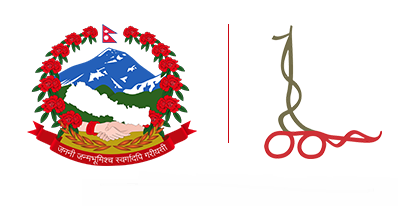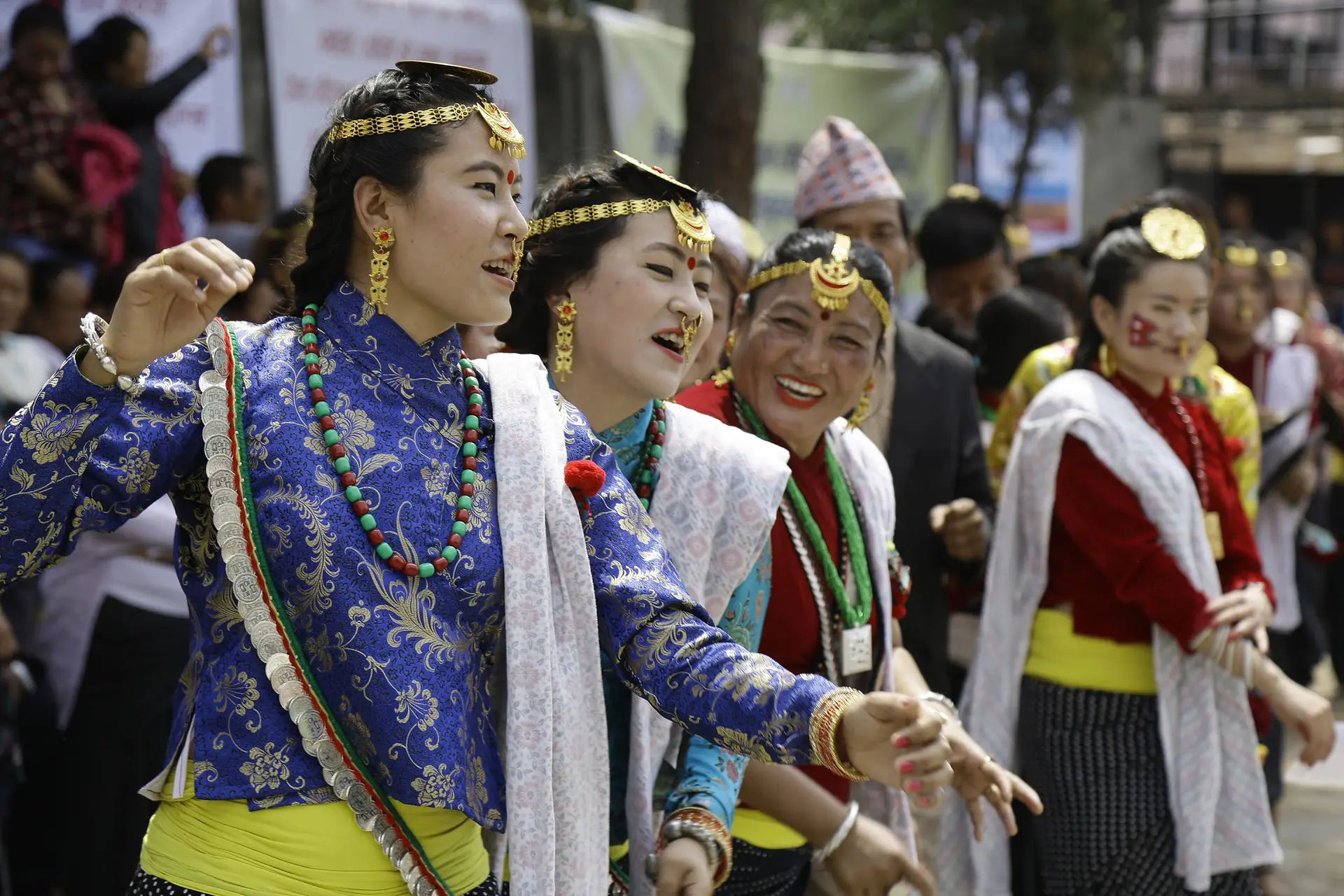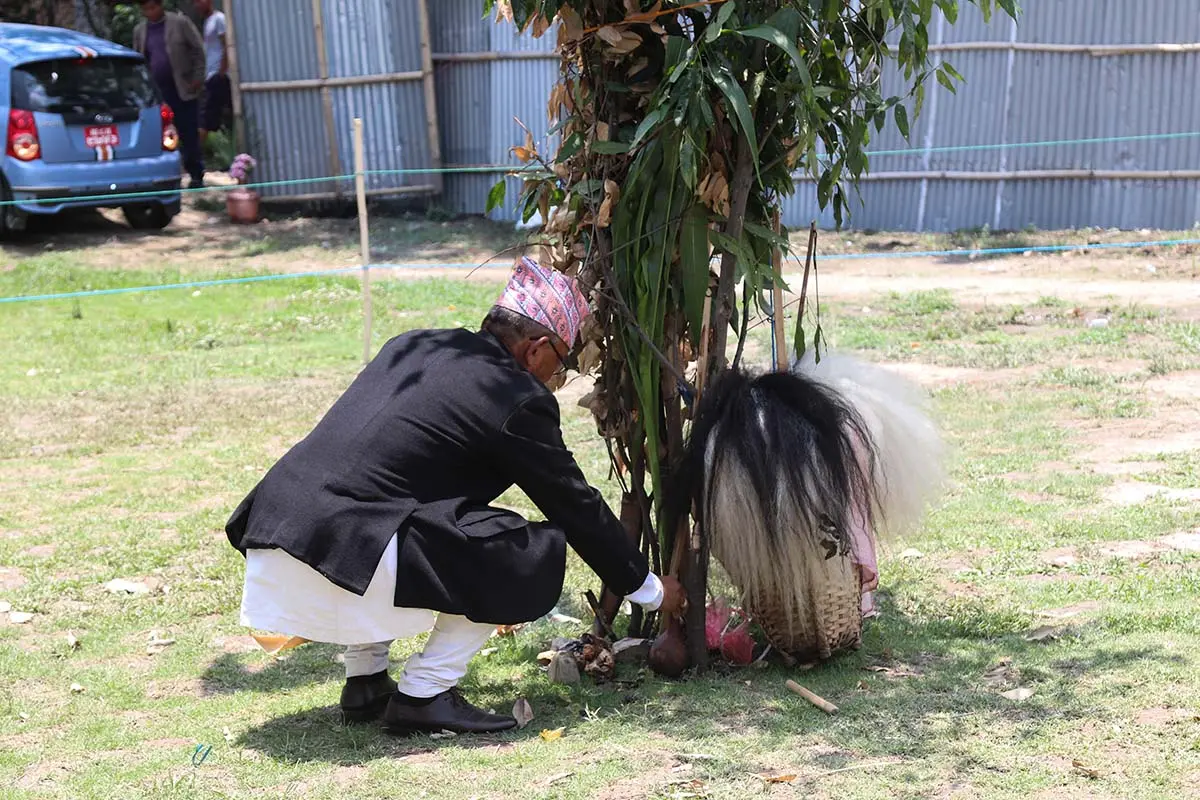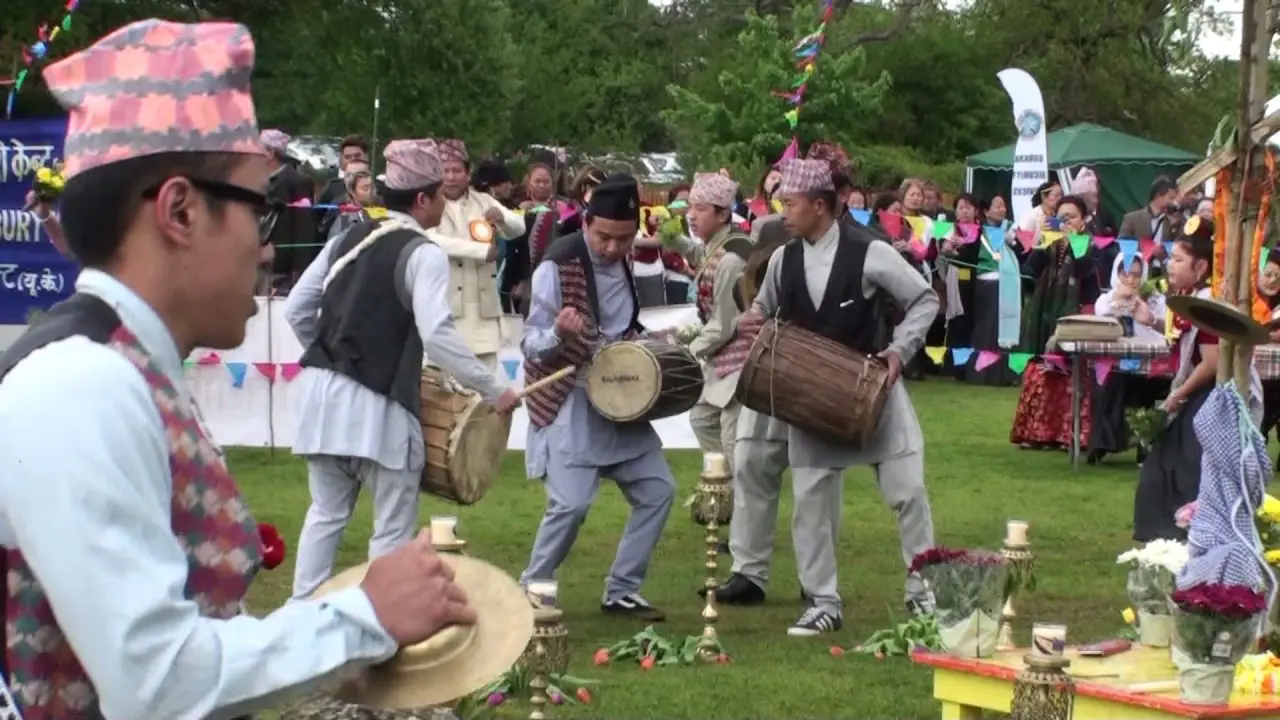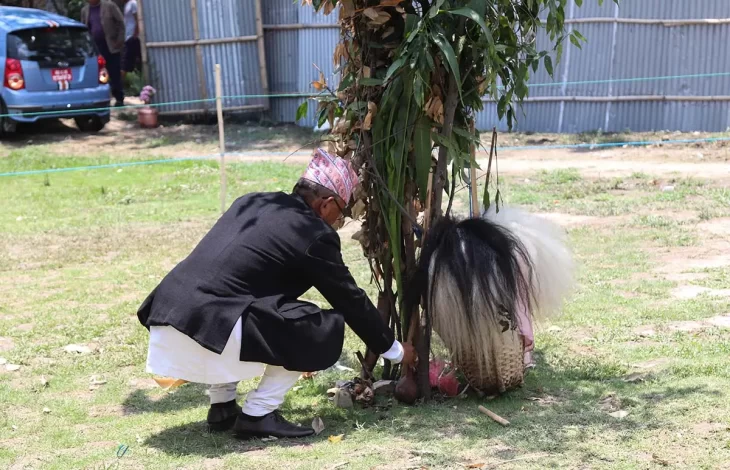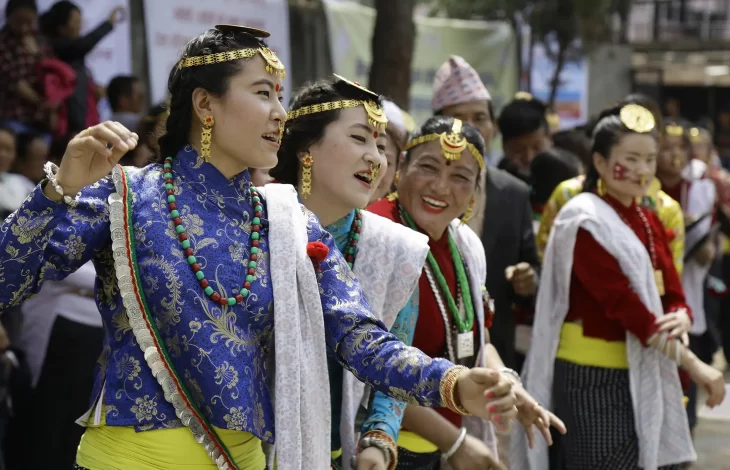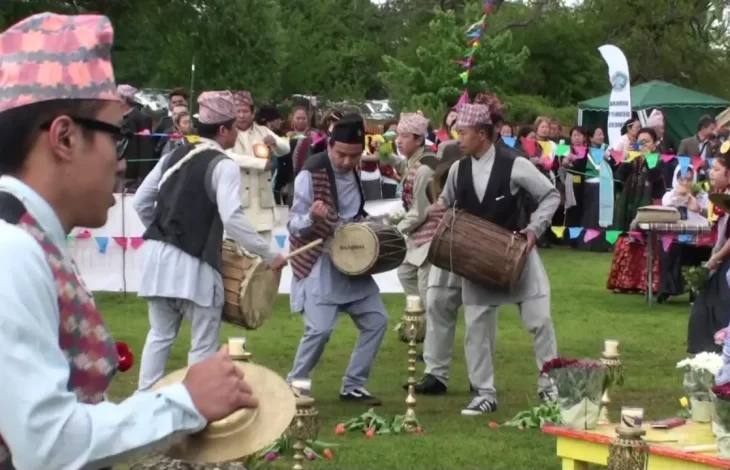
Ubhauli & Udhauli (Sakela)
Ubhauli is derived from the Nepali word ‘Ubho – going up’ and Udhauli is derived from the word ‘Udho – going down’.
According to Kirant ancient religious scripture, Mundhum, a year is divided into these two phases. During the spring, as the snow starts to melt, trees leaves take rebirth, flowers bloom and the temperature rises, birds and animals start to move from lowlands to highlands. Whereas, during the fall, the temperature starts to fall and birds and animals move towards lowlands from highland.
So, the term Ubhauli came from the upward migration pattern and Udhauli came from a downward migration pattern of the group of Gheese bird.
Also, during April/May, people in the past used to move from highlands to lowlands (Udhauli) for paddy cultivation and from lowlands to highlands during November/December for paddy harvesting. The nature worshippers Kirati people celebrate this festival before plantation and harvesting of the crops worshipping their god/goddess Sumnima and Paruhang to for healthy crops and protection from natural disasters. Therefore, the festival is also known as Bhumi Puja.
Legend
The celebration of Sakela is connected to many myths.
According to Kirat mythology, it is said that before the marriage of the Gods of the Kirats Sumnima and Paruhang, Paruhang used to live in heaven. One day, he saw the beautiful Sumnima on earth and fell in love with her. He made a beautiful comb and sent it to her who then wished to wed him.
Four children were born after their marriage. But, Paruhang left Sumnima in a hut on the bank of the Dudhkoshi river and did not return for a long time. One day, Sumnima saw a creeper growing on a rock while she was searching for food for her children. She tasted the creeper and found it to be full of power and happiness. She brought the creeper and made a buti, an intoxicating religious garland, out of it. The buti inspired everybody who saw it to speak the truth about her/his life.
Then, one-day Paruhang returned. He tried to counsel with the angry Sumnima. She then gave him the buti. This immediately made him happy and he started to tell her what he had done. He had spent the time looking at heaven and earth from the top of Chomolongma (Mt. Everest). He also told her that he had meditated and visited the entire universe. Paruhang promised not to leave her again, which made Sumnima dance with joy. It is believed that her joyous dance is the Sakela dance. Tradition has it that young boys and girls come to participate in the Sakela dance in order to meet each other and find their love.
According to the Mundhum, the Rai people (Kirat) came out of the Khuwalung (sea or big river) meaning the Ganges river. Then, followed the small river or the Saptakoshi. On their journey, they first met a duck (Hans), then a river bird (Dhobi Chara), a black bird (Kalchuda), a deer (Mirga), a Thar, a musk deer (Kasturi), etc. They together had the journey through the Arun valley, Dudh Koshi valley, Sun Koshi valley, Tama Koshi valley and finally settled down in the Bhote Koshi valley. The Nakchhong, or the leader of the Sakela festival, narrates this Mundhum history, where he tells the story of how their ancestors came out of the Khuwalung and met a duck; and at the same time he dances in the pattern (sili) of a duck; likewise when he talks about the dhobi chara, he dances in the pattern of a dhobi chara. This is the Kirat way of relating the story (Mundhum) verbally and through the act.
What is ‘Sakela’?
Sakela [साकेला] is actually a word from Rai language which means ‘Sakela Nach’. So, it’s basically the type of dance, which Kirant Rai people perform during their main festival ‘Ubhauli’ and ‘Udhauli’. It’s well said that Kirant Rai people used to perform this dance during celebrating these festivals for the god/goddess Sumnima and Paruhang.
Current trend of Sakela
Now, in today’s modern times, even though people have migrated to urban areas or even abroad where they don’t have to do the paddy cultivation/harvesting stuff, they celebrate the festivals during the exact months of the year as a step to keep their culture safe and get handed over to next generations properly.
The Sakela dance has become very popular in different cities of Nepal, particularly among the younger generation. Kirat Rai celebrate this festival widely outside Nepal too, especially in Sikkim, Darjeeling and Kalimpong districts in India, Hong Kong, United Kingdom, Australia and the United States. However, the real flavour of the dance can only be seen in the eastern hills of Nepal, the homeland of the Rai people. The increasing interest in Sakela has helped to spread this Nepali culture all over the world.
Source:https://blog.sulavyatra.com/everything-you-need-to-know-about-sakela-udhauli-and-ubhauli/
